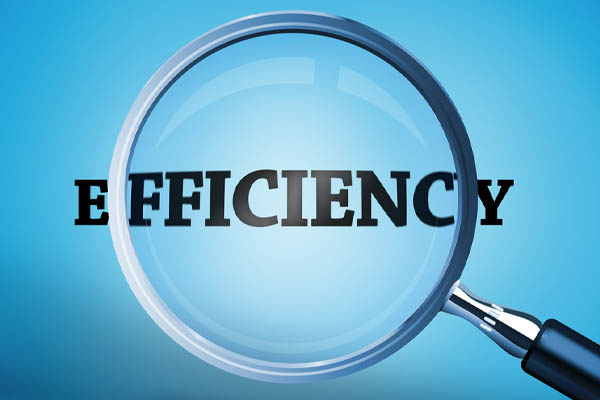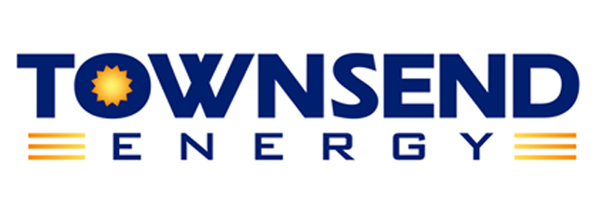How AFUE Ratings Determine The Efficiency Of Home Heating Equipment

Energy Star reports that heating and cooling accounts for about 50 percent of the average home’s total energy bill. Thus, one way to decrease your spending on energy is by making smart decisions concerning the replacement, maintenance, and repair of your HVAC system. For your home heating equipment, you should take the time to familiarize yourself with AFUE ratings because these ratings directly impact the efficiency of boilers and furnaces. The following are all of the most important things to know about AFUE ratings.
What an AFUE Rating Is
Represented as a percentage, the AFUE rating or the annual fuel utilization efficiency rating of an appliance was created by ASHARE (American Society of Heating, Air Conditioning, & Refrigeration Engineers) that measures the efficiency of heating equipment such as furnaces, water heaters, and boilers. AFUE ratings can be defined as a ratio measuring the amount of heat that a unit produces in relation to the amount of fuel that it consumes.
How AFUE Is Calculated
Thus, to calculate the AFUE rating of your home heating system, just divide the amount of fuel that it uses by the amount of heat that it provides which is commonly stated in BTUs or British Thermal Units. For instance, if your heater has an AFUE rating of 85 percent, this means that it of all the fuel that it uses, 85 percent produces heat and the remaining 15 percent is lost via chimneys, burners, and other areas of inefficiency.
It’s important to note that AFUE ratings do not account for energy losses resulting from ductwork or HVAC pipes. There can be significant amounts of heat loss. As per the DOE (the U.S. Department of Energy), ductwork in attics, garages, and other areas of the building that aren’t directly serviced by air conditioners or heaters can lose up to 35 percent of the output from furnaces.
Higher AFUE ratings mean higher levels of efficiency, and lower AFUE ratings denote less efficiency. Simply put, units with high AFUE ratings lead to lower spending on fuel. It’s vital to note that electric heat pumps don’t use AFUE in heating mode. They use HSPF (Heating Season Performance Factor) instead. AFUE is currently a national standard of measurement that the DOE uses to determine the combustion efficiency of heating systems.
To promote higher levels of efficiency throughout the nation, the DOE has established minimum AFUE ratings for gas-fired heaters at 80 percent for Southwest locations and 90 percent for the Northern region. Nearly all new furnaces, which are considered high-efficiency heating systems, currently produced have AFUE ratings of 90 percent or higher.
Related Article: Why Are My Rooms Heating Unevenly?
How to Locate a Heater’s AFUE Rating
In an effort to help shoppers make informed buying decisions, the Federal Trade Commission (FTC) requires companies that make furnaces and boilers to publish AFUE ratings right on their products. This information is usually published right on the yellow EnergyGuide label that’s on most electrical appliances. If you cannot find this rating on the EnergyGuide label, get the retailer’s or the manufacturer’s website to locate this information – or your owner’s manual.
Remember that the heating system usually becomes less efficient as time goes on. Thus, the printed AFUE rating from the manufacturer will probably be significantly higher than the current AFUE rating. This is why it is best to have an HVAC technician measure the current, actual AFUE rating of your furnace or boiler for you.
What Is Considered a Good AFUE Rating?
As per the Department of Energy, anything above 80 percent in the Southwest and 90 percent in the Northern regions is considered a good AFUE rating. However, heaters generally become less efficient as they age. In fact, older, under-performing heating systems can have AFUE ratings that are as low as 56 percent to 70 percent.
The DOE standards make it necessary that all new systems have minimum AFUE ratings of 78 percent. Based on their AFUE ratings, heating systems are either recognized as being low-efficiency (AFUE ratings that range between 80 percent and 89 percent) or high-efficiency (AFUE ratings of 90 percent or greater). Given the inefficiencies that heating systems often entail, such as distribution and firing losses, the highest possible AFUE ratings for heaters range between 97 percent and 98.5 percent.
How Homeowners Can Use AFUE Ratings
AFUE ratings measure the efficiency of furnace operation. It is common for furnaces to become less efficient as time goes on, and thus, older furnaces that are not very efficient have lower AFUE ratings. Furnaces sold in the United States before 1975 were not required to have minimum AFUE ratings. The minimum AFUE rating was set by the Department of Energy in 1987 at 78 percent and was raised in 2015 to 80 percent. Furnaces that are 15 or more years old aren’t generally very efficient and tend to cost quite a bit of money to use.
Even replacing one of these older furnaces with a model that’s considered low-efficiency (an AFUE rating of 80 percent) will result in marked energy savings and more affordable home energy bills. For additional savings, you could shop for a furnace that has a higher AFUE rating. The most energy-efficient heating systems currently available have AFUE ratings of 98.5 percent. The AFUE rating of the heating system you choose will affect both your carbon footprint and your home energy bills.
Related Article: Essential Tips For Surviving A Home Heating Emergency
Is Buying a High-Efficiency Furnace a Good Idea?
To answer this, there are several important factors that you need to consider. First, you should think about your location. If you happen to live in an area that’s especially cold, and if you use your furnace frequently, buying a high-efficiency heating system is definitely the best choice because it will result in considerable energy savings as time goes on. High-efficiency furnaces can be about 18.5 percent more efficient than low-efficiency designs. Various research has revealed that the average U.S. household spends about $600 on heating annually. With a high-efficiency heating system, you can save about $111 each year.
Next, you should think about your budget. High-efficiency furnaces cost approximately $1,000 more than mid-efficiency heating systems. However, all furnaces should last between 15 and 20 years. Thus, if you’re saving about $111 on your heating costs each year for 15 years, you’ll ultimately save $1,600. This will allow you to recoup the additional money that you spend on this system.
High AFUE Furnace Features
Furnaces with high AFUE ratings tend to come with some of the latest and most innovative features and technologies for delivering unparalleled efficiency. Among some of the top features available on the systems are:
- Secondary heat exchangers
- Variable-speed blowers
- Improved air filtration
- Direct spark ignitions
Related Article: What You Can Expect During Your HVAC Installation
Conclusion
AFUE measures the efficiency of boilers and furnaces. The DOE used AFUE ratings to determine efficiency standards for these heating systems. Every furnace currently sold in the United States must have an AFUE rating of 80 percent or higher.
Call Townsend Energy for Trusted Home Heating Services

Give Townsend Energy a call if you need assistance with your heating or cooling system. We offer competitive rates, so you don’t need to go elsewhere. Schedule an appointment today and get a free, in-home estimate. Click the link to view our service area.
Contact us now at (800) 722-4101 to find out more!


